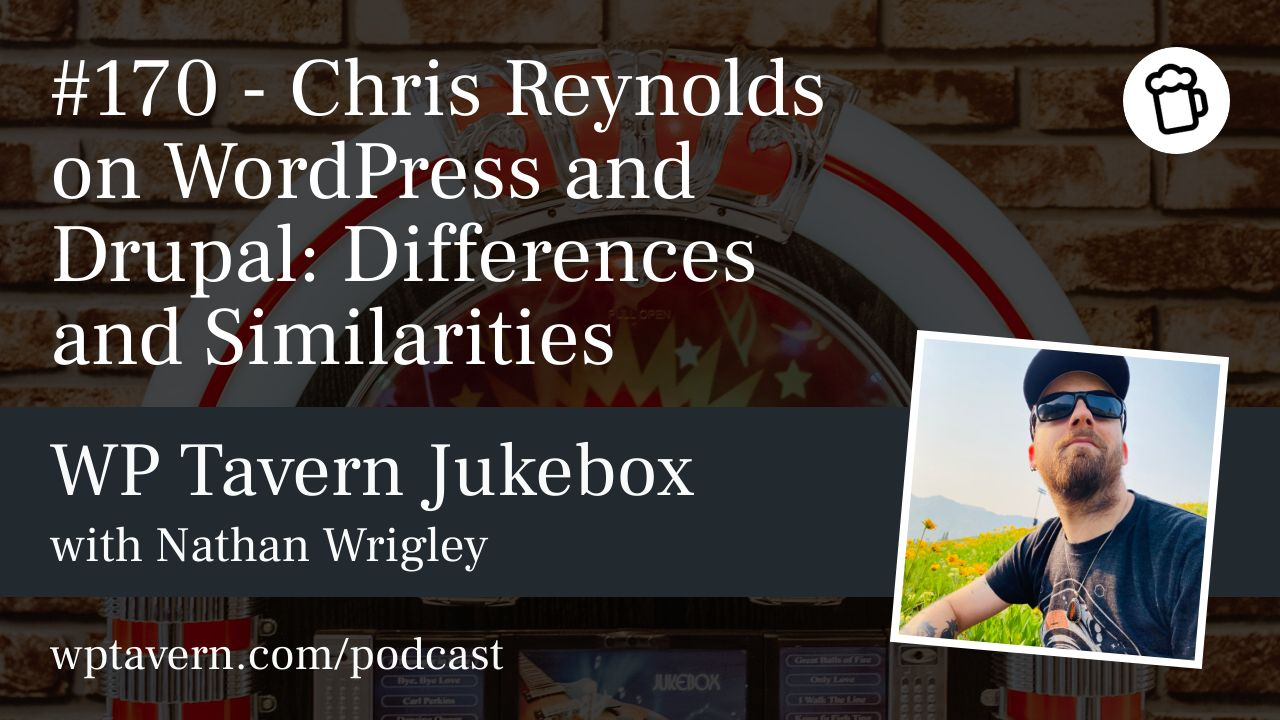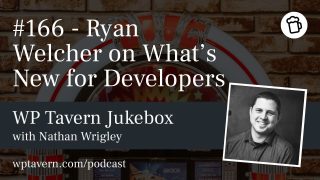Welcome to the Jukebox Podcast from WP Tavern. Nathan Wrigley interviews Chris Reynolds, developer advocate at Pantheon, about WordPress and Drupal: how they compare, where they differ, and what each community might learn from the other.
Chris’s background
Chris has nearly 20 years in the WordPress community, plus deep Drupal and open source experience. Before developer relations at Pantheon he worked as a senior software engineer and at agencies like Human Made and WebDevStudios. He attends events across both ecosystems and brings a cross-platform perspective—Pantheon runs roughly a 50/50 split of WordPress and Drupal sites.
Pantheon as platform and product
Pantheon is more platform than simple host, emphasizing DevOps features such as Git-based workflows and Multi Dev: isolated ephemeral environments per branch, alongside dev, test, and live environments. Multi Dev lets teams build features safely, then promote finalized code through the workflow. Pantheon supports Drupal, WordPress, and other front-end frameworks; however, the platforms have nuanced needs—Drupal’s queries and architecture differ from WordPress and often require different optimizations.
Drupal vs WordPress on the platform level
Pantheon uses broadly similar stacks for both CMSs but adapts to differences: Drupal historically embraces Composer and Solr, while many WordPress teams prefer Elasticsearch and have been slower to adopt Composer. The 80/20 idea applies—most of the stack overlaps, but the crucial 20% requires care.
Events and community gatherings
DrupalCon serves as the Drupal flagship event and has regional equivalents (US, Europe, Asia). It mirrors flagship WordCamps; both ecosystems also have smaller local events (DrupalCamps, WordCamps). Pantheon’s presence feels larger in the Drupal pond because the Drupal community is smaller overall. Chris notes differences in sponsorship landscapes: DrupalCons often showcase agencies and platform vendors prominently.
Drupal’s governance and the Drupal Association
Drupal’s history includes the Drupal Association, initially created to manage events and which later gained a broader role in funding and directing community projects. The Association can allocate surplus funds and staff to projects that support the long-term health and goals of the project. Dries Buytaert leads technical direction, while the Association handles organizational support and community-funded initiatives.
Why Drupal CMS was created
Drupal faced migration challenges—Drupal 7 users were slow to move to Drupal 8+ (largely because upgrades often required site rebuilds and Composer adoption). That contributed to a long tail of outdated sites. The Drupal Association funded “Drupal CMS,” a more guided and user-friendly build on Drupal 11 that lowers barriers to adoption. Key features include:
– Improved installer: A guided setup that asks what type of site you want and pre-installs relevant configurations.
– Recipes: Bundles of modules plus their configuration that implement typical site needs (SEO, AI features, content patterns). Recipes install modules and preconfigure them to get users close to a working result.
– AI recipe and admin chat: An AI-driven assistant that can help create content types and other configuration by conversational prompts.
– Templates roadmap: Beyond recipes, templates would deliver near-complete site starting points (e.g., real estate site) including theme and configuration.
These efforts aim to make Drupal less developer-centric, more approachable for content creators, and to reduce rebuild friction.
Modules vs plugins and ecosystem approaches
Drupal historically consolidates around canonical modules: instead of competing plugins, contributors collaborate on a shared module (e.g., Webform, Views). That means fewer competing solutions and more community-focused evolution of core add-ons. WordPress, by contrast, has many competing plugins and a vibrant commercial plugin/theme market; that competition has driven rapid adoption and commercial ecosystems (Gravity Forms, Yoast, etc.).
An interesting example: Yoast
Drupal’s SEO recipe uses the Yoast module that reuses Yoast’s JavaScript but integrates it in a leaner way for Drupal—providing the traffic-light SEO guidance without unrelated extras. This illustrates cross-pollination and pragmatic reuse across ecosystems.
Contribution models and funding
Both projects face similar challenges: how to sustain contribution, involve younger developers, and balance corporate involvement. Drupal’s Association and governance provide clearer, institution-backed pathways to fund and staff initiatives. WordPress has concepts like Five for the Future (encouraging contributions from companies), but lacks formalized mechanisms to track and reward contribution in the same structured way. Chris argues contribution should be viewed broadly: hosts, agencies, theme and plugin authors, and platform work all advance the ecosystem even if not classified as Core contributions.
Maker/taker discussion
Dries has written about “maker/taker” dynamics—how the ecosystem balances those who build infrastructure and features against those who consume. WordPress and Drupal share these debates: who gets credit, how funding flows, and how to motivate sustained contribution. Agencies contribute heavily in Drupal, and many DrupalCon booths are agencies showcasing real client work; in WordPress, sponsors include hosting companies and plugin/theme vendors.
Similarities, differences, and possible cross-pollination
Both communities started with individual leaders (Matt and Dries), grew into global ecosystems, and now wrestle with scale, diversity, governance, and sustainability. Drupal’s approach—formal association funding, recipes, admin streamlining—offers ideas for organized investment in usability and guided site creation. WordPress’s commercial marketplace and backward compatibility have accelerated adoption and enabled thriving businesses around plugins, themes, and services.
Chris suggests each community could learn from the other: Drupal could continue simplifying onboarding and offering curated templates/recipes; WordPress could consider more formal structures for tracking, rewarding, and coordinating contributions beyond Core.
Closing
Both ecosystems have much in common and face similar problems. Their different histories and governance choices produce distinct strengths: Drupal’s consolidated module strategy and association-backed initiatives vs WordPress’s broad marketplace and commercial-driven acceleration. Cross-community dialogue and shared learning could help both projects evolve and better serve users and contributors.
Nathan thanks Chris for the conversation; Chris enjoyed the discussion and continues his work advocating for better tooling and community engagement across both platforms.






